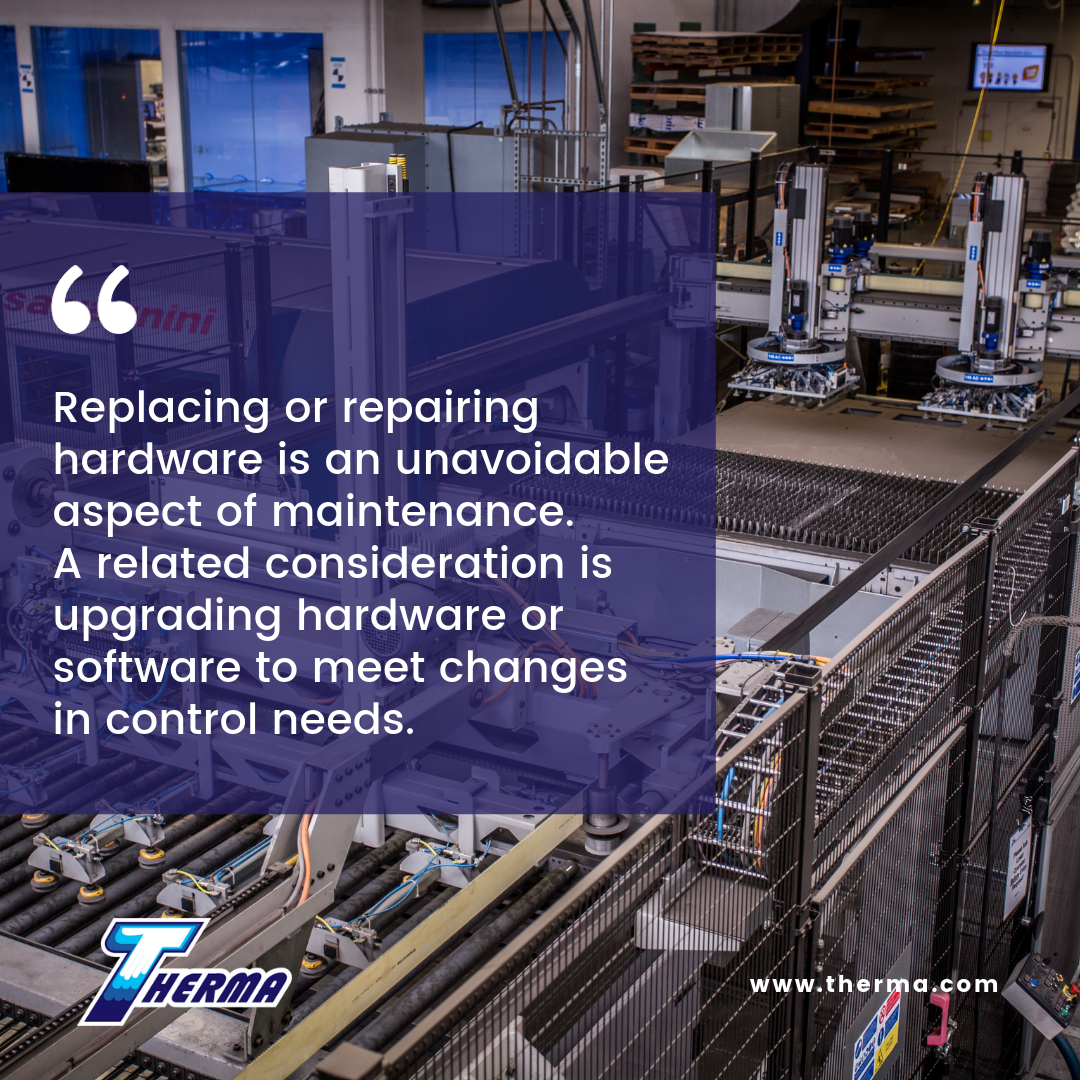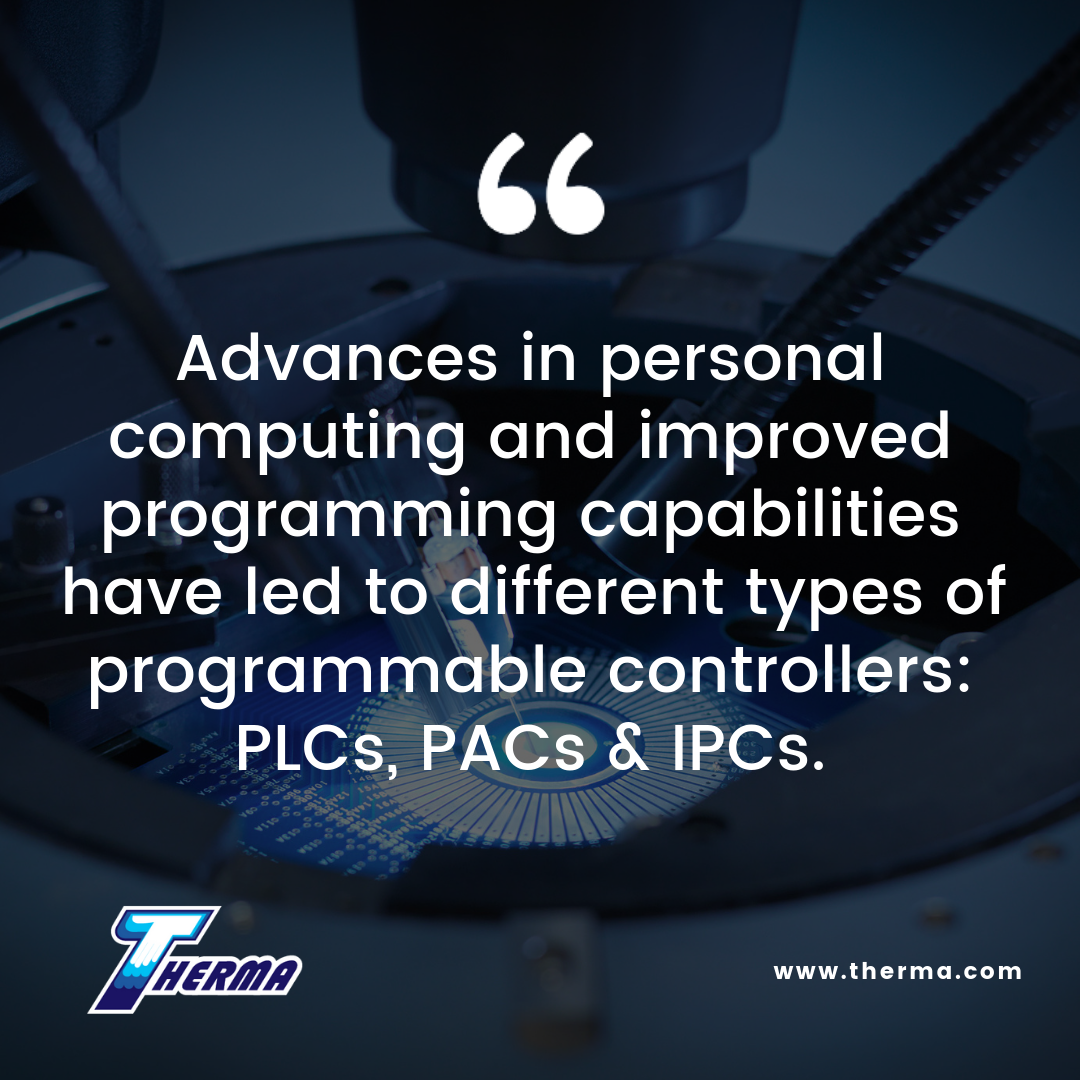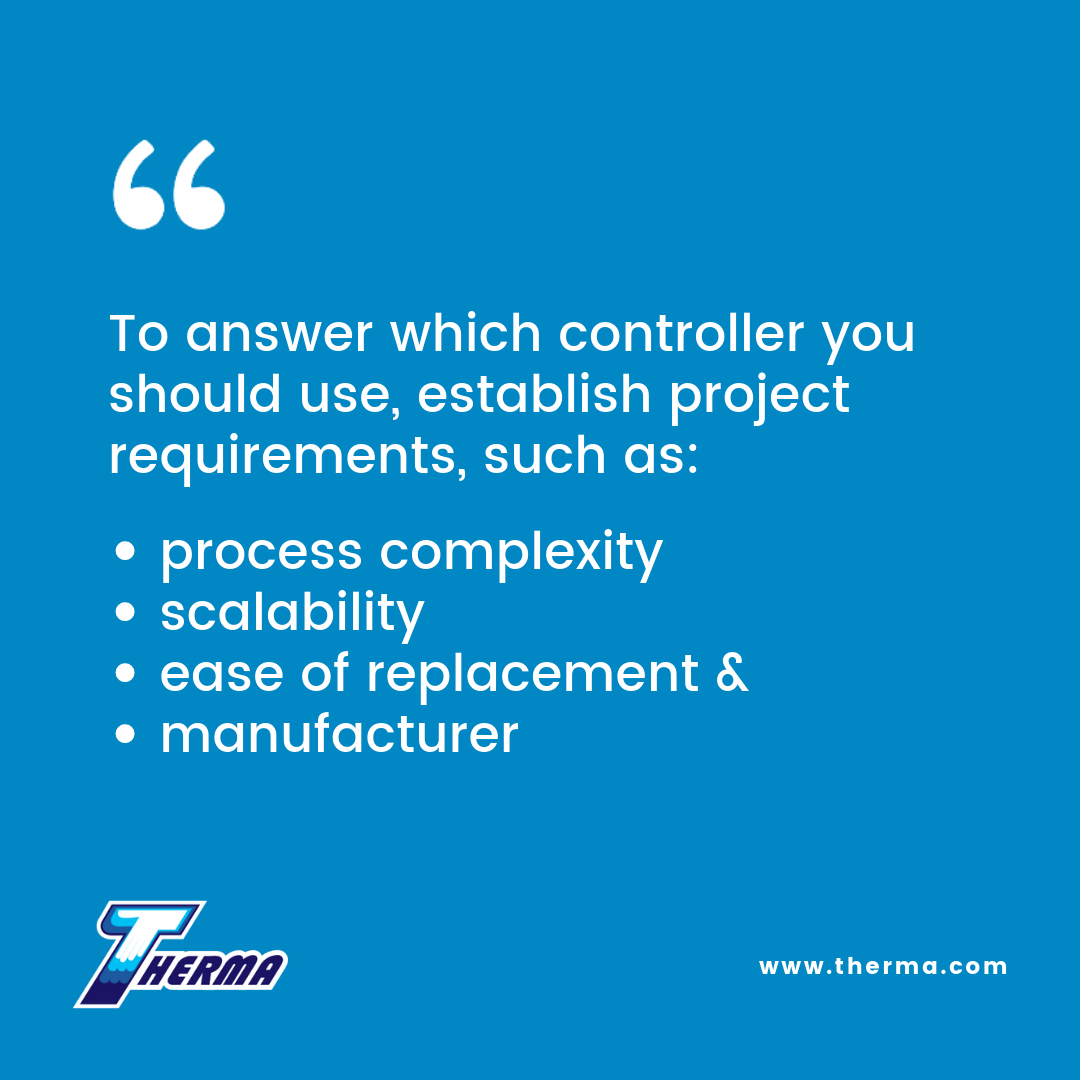Modern Industrial Controllers
Modern industrial controllers provide more processing and interconnectivity than those available even a decade ago. Advances in personal computing and improved programming capabilities have led to different types of programmable controllers: programmable logic controllers (PLCs), programmable automation controllers (PACs) and industrial PCs (IPCs). All three types of controllers are customizable to target your project needs.
PLCs, PACs and IPCs: What Are They?
PLCs marked the beginning of programmable controllers and have continued to improve. These controllers are modular with built-in networks for communicating with other PLC or supervisory control and data acquisition (SCADA) systems. PLCs can handle discrete and analog I/O using ladder logic but have limited memory. Human machine interfaces (HMIs) are usually separate from the controller.
PACs are also modular and have an open architecture for adding or upgrading hardware. They use standard network protocols, which improve intercommunication across multiple devices. PACs benefit from more memory and better processors than PLCs have.
IPCs are industrial computers with programming functions similar to PLCs. However, these types of controllers have better processors and more memory than PLCs and even some PACs. Unlike a regular desktop PC, manufacturers construct IPCs to handle a variety of environmental factors such as heat, dust, vibration and moisture. The same machine may also serve as an HMI.
Which Industrial Controller Is Best for my Project: PLCs, PACs or IPCs?
Every project requires tailored planning to find the best industrial controller for the job. To answer which controller you should use, establish project requirements, such as process complexity, scalability, ease of replacement and manufacturer. While cost is always important, consider other factors before choosing industrial controllers to ensure you make a solid investment.
Process complexity: Does the project scope target a subset of equipment or include an entire floor?
Due to the degree of customization available in all three types of controllers, there are overlaps in how effective each are in dealing with complexity. PLC programming logic works well for smaller or less complicated processes and equipment. PACs use more flexible programming than PLCs, making them better for handling larger projects or processes with more complex demands. IPCs, depending on their configuration, can provide a mid-point solution. Larger projects may need a combination of all three controller types.
Scalability: Does planning ahead for growth matter?
Not all projects require future expansion. If the long-term needs are likely to require adding equipment or implementation in stages, consider the ease of increasing the scale of the automation system. A system’s degree of scalability limits PLC usefulness for expanding automation across larger processes. Replacing hardware cards and adding programming for expanded capabilities is possible, but only up to a point. If scalability is a primary factor for your project, an IPC or PAC provide more options. Their open architecture and better networking abilities make it possible to implement equipment or process control in stages.
Ease of replacement and upgrades: Will your control needs change?
Replacing or repairing hardware is an unavoidable aspect of maintenance. A related consideration is upgrading hardware or software to meet changes in control needs. PLCs are easy to replace for maintenance since they are modular and tend to target individual equipment or a small subset of a process. The PLCs’ problems with scalability, particularly the limits in programming, also limit upgrades. As with desktop PCs, consider compatibility when adding hardware or software to an IPC. The open architecture of both the PAC and IPC industrial controllers provide advantages for upgrading in the future.

Current controller brand: Can you get the support you need?
An additional factor for projects that will tie into or replace parts of an established automation system is the current controller brand or manufacturer. Unless replacing all automation systems, avoid potential issues by staying within a manufacturer’s family of controllers to ensure they will be compatible. Relying on the same programming language or software used across controllers will streamline troubleshooting and support, making the automation more efficient.
PLCs, PACs and IPCs improve process and equipment automation across a broad spectrum of scenarios. Choosing the best industrial controller is a matter of comparing controller characteristics to the project requirements.
References
- https://www.automation.com/pdf_articles/Understanding_PACs_in_Industrial_Automation.pdf
- https://www.controldesign.com/articles/2017/forget-plc-vs-pac-vs-ipc/
- https://www.controldesign.com/articles/2018/the-ipc-adapts-to-advanced-control-needs/
- https://www.controleng.com/articles/plc-vs-pac/
- https://www.controleng.com/articles/plc-vs-pac-vs-ipcs/









